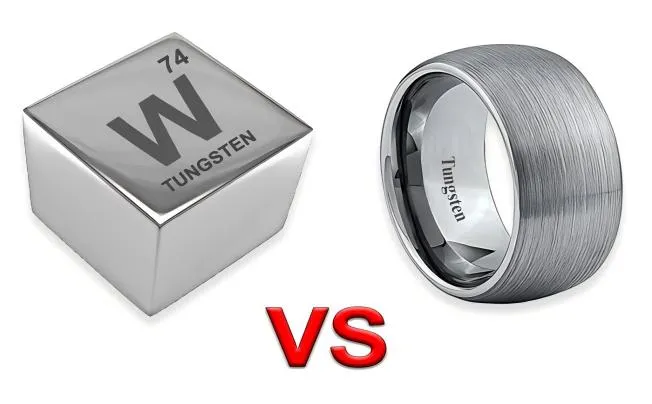This article dives into the complexities of detecting silicon metal powder, highlighting the challenges associated with its particle size, purity, and chemical reactivity. For those working in fields where precision and purity are paramount, this article provides valuable information on the latest advancements in detection technologies and the ongoing efforts to improve accuracy.
Characteristics of Silicon Metal Powder
Bit Size
The bit dimension of silicon steel powder is among the primary variables affecting its detectability. Silicon steel powders can vary from micrometers to nanometers in size. The smaller the bit size, the more challenging it becomes to identify due to the decreased scattering of light and various other electromagnetic waves. As an example, nanoparticles display various optical and electronic behaviors contrasted to larger particles, making complex typical detection techniques.
Pureness Levels
One more critical element is the purity of the silicon metal powder. Pureness levels can vary extensively, typically determined in terms of the portion of silicon content versus various other metallic or non-metallic contaminations. Higher purity silicon steel powders, commonly going beyond 99.99% silicon, are harder to spot due to their decreased interaction with other elements that may or else promote detection. Contaminations, such as iron, aluminum, or carbon, can considerably modify the physical and chemical reactivity of the powder, consequently affecting its detectability.
Chemical Reactivity
The sensitivity of silicon steel powder with various other substances additionally plays an essential role in discovery. Silicon, while usually stable, can respond with oxygen to form a thin layer of silicon dioxide externally of the bits. This oxide layer can influence the powder's actions under different detection techniques, such as electron microscopy or spectroscopy. The existence of an oxide layer can either improve or cover the detection signals, depending upon the technique utilized.
Methods of Detecting Silicon Metal Powder
- Instrumental Neutron Activation Analysis (INAA)
Instrumental Neutron Activation Analysis (INAA) is a powerful strategy utilized for finding micronutrients in silicon metal powder. This method entails irradiating the example with neutrons, creating the aspects within to create radioactive isotopes. The emitted gamma rays from these isotopes are after that gauged to establish the focus of aspects within the powder. INAA is specifically helpful for its high level of sensitivity and non-destructive nature, making it ideal for spotting contaminations in high-purity silicon utilized in semiconductor manufacturing.
- Synchrotron-Based Impurity Mapping
Synchrotron-based impurity mapping is an additional advanced method used for the discovery and evaluation of impurities in silicon steel powder. This technique leverages the extreme X-ray beam of light generated by synchrotrons to penetrate the atomic structure of the example. By mapping the distribution of contaminations, scientists can obtain detailed insights into the purity levels and potential impurities within the silicon metal powder. This approach is specifically beneficial in r & d setups where a high level of accuracy is required.
- Electron Spin Resonance (ESR)
Electron Spin Resonance (ESR) is a strategy that detects unpaired electrons in materials, which can be a sign of contamination or problems in silicon metal powder. By using an electromagnetic field and gauging the resulting power absorption, ESR can supply detailed info regarding the digital structure of the silicon and any type of linked impurities. This approach is particularly sensitive to really little focus on impurities, making it useful in high-purity silicon applications where also trace amounts of impurities can significantly impact performance.
Industrial Applications Requiring Detection of Silicon Metal Powder
Accurate detection of silicon steel powder is essential throughout several sophisticated industries because of its essential duty in various making processes.
In semiconductor manufacturing, the purity and particle dimension of silicon steel powder directly influences the high quality and efficiency of semiconductor tools. Any contamination or variant in the powder's features can lead to defects in silicon chips, influencing the capability and reliability of the end product. Therefore, precise discovery methods are vital to ensure the consistency and pureness required for semiconductor applications.
In the battery production industry, especially in the advancement of next-generation lithium-ion batteries, silicon metal powder is progressively being utilized as an anode product due to its high capability for saving power. Nevertheless, the performance and life expectancy of these batteries are very based on the uniformity and pureness of the silicon powder. Detecting also map quantities of pollutants is crucial, as they can considerably break down battery performance and security. Advanced discovery strategies are therefore employed to keep strict quality control in this market.
Likewise, the sophisticated electronic devices market, which includes the manufacturing of devices like sensing units, transistors, and other components, counts on high-purity silicon steel powder. The detection of pollutants or variances in the powder is crucial, as these can change the electrical homes of the last products. This is specifically essential in applications requiring high accuracy and dependability, such as in aerospace electronic devices or medical devices, where also small issues can have severe repercussions.
Future Trends in Silicon Metal Powder Detection
As we look ahead, the discovery of silicon metal powder is positioned to undertake substantial developments driven by recurring research studies and the advancing needs of different industries. The future of this area will likely be shaped by three essential areas: enhancements in detection sensitivity, the rise of arising applications like high-energy batteries and clean modern technology options, and the advancement of extra sophisticated detection instruments.
Among one of the most encouraging fads is the improvement of detection sensitivity. As industries push for higher purity levels, particularly in semiconductor manufacturing and progressed electronics, the need to spot also the smallest traces of impurities in silicon metal powder will come to be significantly crucial. Future advancements are expected to concentrate on refining existing methods such as Instrumental Neutron Activation Analysis (INAA) and Synchrotron-Based Impurity Mapping, possibly including artificial intelligence to boost precision and performance.
Another area of growth is in the discovery of technologies needed by arising applications like high-energy batteries and tidy innovation remedies. These industries demand silicon metal powder with specific homes, making precise discovery crucial for guaranteeing the high quality and efficiency of completion items. For instance, in battery manufacturing, the harmony of silicon bits can substantially influence the efficiency and durability of batteries. Therefore, we can anticipate the advancement of specialized discovery approaches customized to meet the specific requirements of these new applications.
Lastly, the future will likely see the arrival of discovery tools that offer better precision and convenience. Developments such as portable detection tools, which can be made use of straight-in industrial setups, and much more robust laboratory tools with the ability of multi-modal evaluation, are on the horizon. These devices will certainly be designed to handle a bigger variety of example types and problems, allowing even more extensive evaluation of silicon metal powder.
In recap, the future of silicon metal powder discovery is brilliant, with innovations in sensitivity, the increase of brand-new applications, and the development of advanced tools leading the way. These trends will certainly not just boost the accuracy of detection but also widen the extent of what is possible in different commercial and technological areas.







